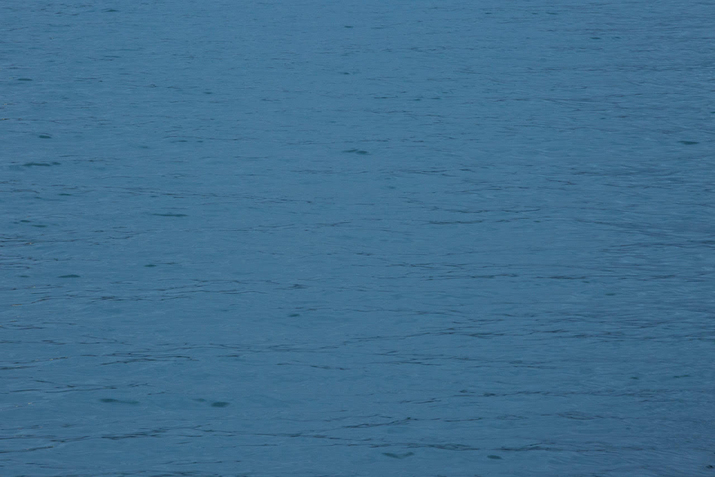Shows
“Mekong - New Mythologies”


“Mekong – New Mythologies” at Hong Kong Arts Centre’s Pao Galleries featured new and existing artworks by 18 artists and artist duos mostly from East, Southeast and South Asia. Many presented their responses to ecological, social and political shifts taking place along the famed river, while others showcased the impact of water on individuals and societies. There were even artworks that extended those influences to the context of Hong Kong.
Taking water as a departure point to address one of the most critical issues of our era, Vietnamese-American artist Dinh Q. Lê created a massive artwork, The Scroll of the Mediterranean Sea, April 12th, 2015 (2016), which spanned 50 meters in length and cascaded from the institution’s fifth level to the fourth. The artwork’s streaks of rich blues and whites, along with an unconventional placement, made it resemble an indoor waterfall. Though this image gives off the impression that it is an abstract digital print meant to evoke rushes of water, it is actually an elongated photograph of refugees on boats floating on—as the title indicates—the Mediterranean Sea. Once the viewer is informed of the artwork’s origin, its visual impact gives way to the artist’s subtle commentary. Here, Lê not only responds to a key contemporary issue, but also mines his personal history—the artist and his family moved to Los Angeles in 1979 to escape the Khmer Rouge, so he is intimately familiar with the plight of those traversing dangerous waters in hopes of reaching safe shores.



Whereas Lê’s Scroll spoke to viewers via narratives of movement, Leung Chi Wo captured static moments of seawater in Untitled (Blue Water) (2014), a set of four inkjet prints each presenting water in a different shade of blue. These images were captured at various points of day, from the early morning to the evening. The changing tone in each frame—reflecting observations of the ocean under dissimilar qualities of light—determines one’s perception of the water. Just as our views of the ocean may change throughout the day, time may also alter our understanding of our culture and history.
Tuan Andrew Nguyen’s Nine Dragons River 1 (2017) and Nine Dragons River 2 (2017)—their shared title is what the Mekong is known as in Vietnam—were presented in two discs. In each artwork, gold-colored survival blankets are crumpled to resemble protruding rocks or hills, held in place by dried, blue epoxy resin representing water in the “channels” and “fissures.” The survival blanket’s gold tone suggests human exploitation of nature, in particular pointing to infrastructure projects planned and executed along the Mekong. The balance between development and conservation is delicate, and improvements in standard of living may lead to literal changes in the physical landscape.

Artworks that directly addressed Hong Kong’s context formed their own sub-exhibition on the lower level of the Pao Galleries. Artist duo MAP Office added eight imaginary islands to Hong Kong’s existing landscape, presenting them as a set of eight drawings titled Hong Kong is Land (2014). The title of this set of drawings is a play on the name of Hong Kong Island, but also pinpoints one of the characteristics of the city—the importance of land. Each of MAP Office’s drawn islands is constructed according to its own theme—land, sea, self, resources, possible escape, surplus, endemic species and memories. Together, they tell key stories of the Fragrant Harbor. For instance, MAP Office binds Hong Kong’s Filipino community to the hexagonal island of “resources.” As a whole, “Mekong – New Mythologies” spoke to many concerns that have arisen in Asia, where rapid changes are taking place. Though some artworks, like those by artists based in Hong Kong, deviated from the Mekong, they still echoed crucial social issues along the river.

“Mekong – New Mythologies” is on view at the Hong Kong Arts Centre until May 21, 2017.







